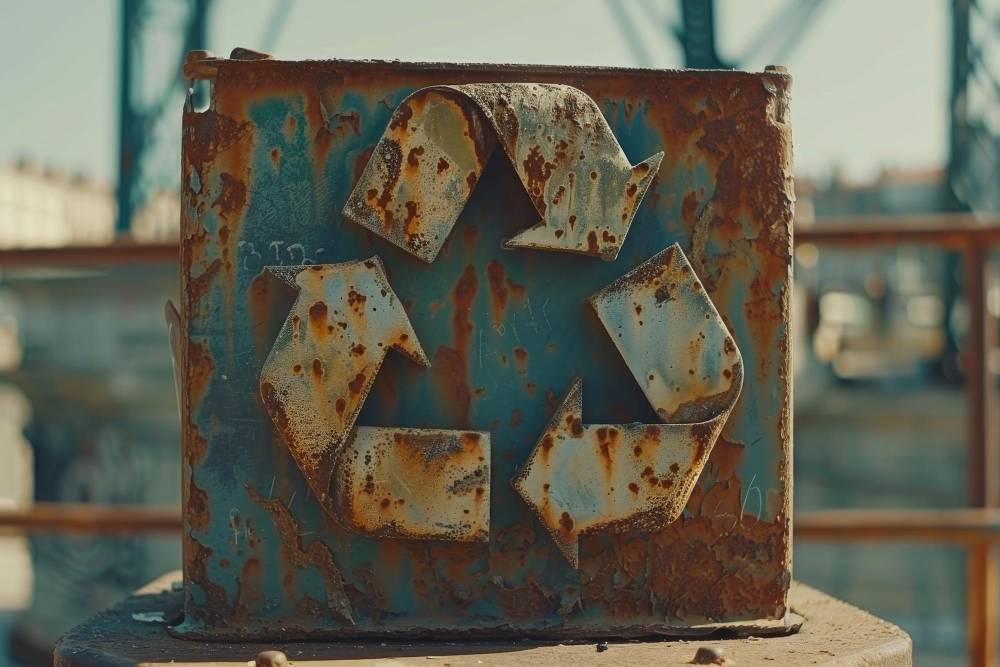
Scrap metal recycling has become an environmentally friendly way to make some quick cash, but did you know this isn’t just a 21st-century phenomenon? Far from being a new trend, metal recycling has a rich history that stretches back centuries – possibly even millennia. People have been reusing and recycling metal long before the words "green" and "sustainable" became buzzwords.
Whether driven by scarcity, necessity, or simple ingenuity, humans have always found ways to repurpose metal. In this brief article brought to you by your local scrap metal company, Just Scrap It, we explore the fascinating history of metal recycling and see how this age-old practice evolved into the thriving industry we know today.
The idea of recycling metals goes back much further than you might think. In fact, some of the earliest evidence of metal recycling can be traced to ancient civilizations. Thousands of years ago, long before modern waste management, people recognized the value of repurposing metals.
Take the ancient Romans, for example. They were masters of recycling, particularly when it came to bronze and iron. During times of war or economic hardship, they would melt down old weapons, armor, and tools to create new ones. This wasn't just a matter of being thrifty; it was a matter of survival. Resources were often limited, and melting down existing metal was far easier (and less expensive) than mining for new materials.
Similarly, artisans in ancient Egypt would collect metal scraps from statues, jewelry, and household items and melt them down to create new goods. Even back then, people understood that metal was too valuable to throw away.
As societies advanced through the Middle Ages, the need for metal continued to grow – especially as the use of iron and steel became more widespread in construction, farming, and warfare. However, the mining process was difficult, costly, and dangerous, so recycling remained a vital part of life.
During this period, blacksmiths were among the most skilled recyclers. They would collect scrap metal from old farm equipment, tools, or damaged goods and reforge it into new products. The need for armor, swords, and other weapons during times of war only fueled this demand.
The Industrial Revolution in the 18th and 19th centuries brought dramatic changes to the way metals were produced and consumed. Factories and industries were springing up everywhere, fueling an insatiable demand for raw materials, including metal. This era marked the birth of modern metal recycling.
As cities grew and more metal products were manufactured – everything from steel railroads to cast-iron machinery – people became more conscious of the need to reuse materials. Scrap metal became a valuable commodity. Collectors would roam the streets to gather discarded metal objects which they would then sell to factories to be melted down and reused.
The industrial boom also brought about advancements in technology, making the recycling process more efficient. Scrap yards became a common sight, and recycling metal began to evolve into a more formalized industry. Large-scale metal recycling efforts during this time laid the foundation for the massive recycling infrastructure we have today.
Fast forward to the early 20th century and metal recycling took on an even more important role during World War I and II. With so much metal needed for tanks, ships, airplanes, and weapons, recycling became a patriotic duty.
During World War II, governments around the world launched massive campaigns urging citizens to donate scrap metal for the war effort. People were encouraged to bring in old pots, pans, bikes, and even railings to be recycled into war materials. Communities would organize scrap drives, and collecting metal became a symbol of national unity.
While recycling metal was driven by economic and military necessity for much of history, the modern era has shifted the focus toward sustainability and environmental protection. By the 1960s and 1970s, awareness of environmental issues began to grow as people started to realize how much waste was being generated by industries and consumers alike.
Metal recycling fit perfectly into the environmental movement. Not only does recycling metal conserve natural resources, but it also uses far less energy than producing new metal from raw materials. For example, recycling aluminum saves up to 95% of the energy required to make new aluminum.
Today, the scrap metal industry is more sophisticated than ever. Modern recycling plants use high-tech sorting systems, advanced smelting techniques, and environmentally friendly practices to process metals more efficiently. And with the rise of online platforms and mobile apps, scrappers can find the best prices for their metals with just a few taps on their phone.
Whether you’re a weekend scrapper looking to make some extra cash or a business aiming to reduce waste, just know that you’re part of a long, proud tradition. If you are looking for a scrap metal buyer in the area, please consider Just Scrap It. Our team is on standby to take your call or message today.
The people were nice and I was able to sell my scrap metal quickly.
Whenever I have metal to get rid of, this is the place to bring it. They are fast and friendly.
I'm thankful for Scrap It. They are great to work with. Friendly and helpful. Thanks
Great service. Very friendly. Highly recommended this scrap yard. Ur very welcome and thanks again.